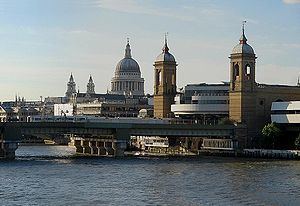Country England Trains 1 Date 8 January 1991 Passenger count 832 | Cause Driver error Passengers 832+ Total number of deaths 2 Injuries 542 | |
 | ||
Similar Wembley Central rail crash, Spa Road Junction rail crash, Ealing rail crash, Purley station rail crash, Eltham Well Hall rail crash | ||
The Cannon Street station rail crash was an accident on the British railway system which occurred on 8 January 1991 at Cannon Street station. The accident killed two people and injured 542 others. The 08:44-arriving commuter train failed to stop at Platform 3 of the terminus (colliding with its buffer stop) at around 10 mph.
Contents
Accident
The train, composed of 10 cars of elderly Class 415 and Class 416 units started its stopping service at Sevenoaks at 07:58 having passed through London Bridge and still had approximately 1000 passengers on board when it collided with the buffer stop at 08:44 at the Cannon Street terminus within the City of London. The fifth and sixth carriages crushed into each other, one lifting from the tracks. A 24-year-old man was cut free from wreckage crushing his head and abdomen and died from a heart attack on the way to hospital. A 59-year-old female passenger died three days later from injuries sustained. Just over half, 542 other passengers were injured, exacerbated as many of the seated passengers had stood up ready to depart. The later inquiry put the speed at impact at around 10 mph, with earlier rail operator's estimates being lower.
Inquiry
A report was compiled of the accident by Her Majesty's Railway Inspectorate. No fault in the train's braking system could be found and the driver, Maurice Graham, was held to blame. He was not tested for drugs until three days after the accident, whereupon traces of cannabis were found in his system. The public inquiry found that there was insufficient evidence to prove drug use had caused the accident.
The inquiry found that the cause of the accident was solely that of driver error. The report also made the following observations:
